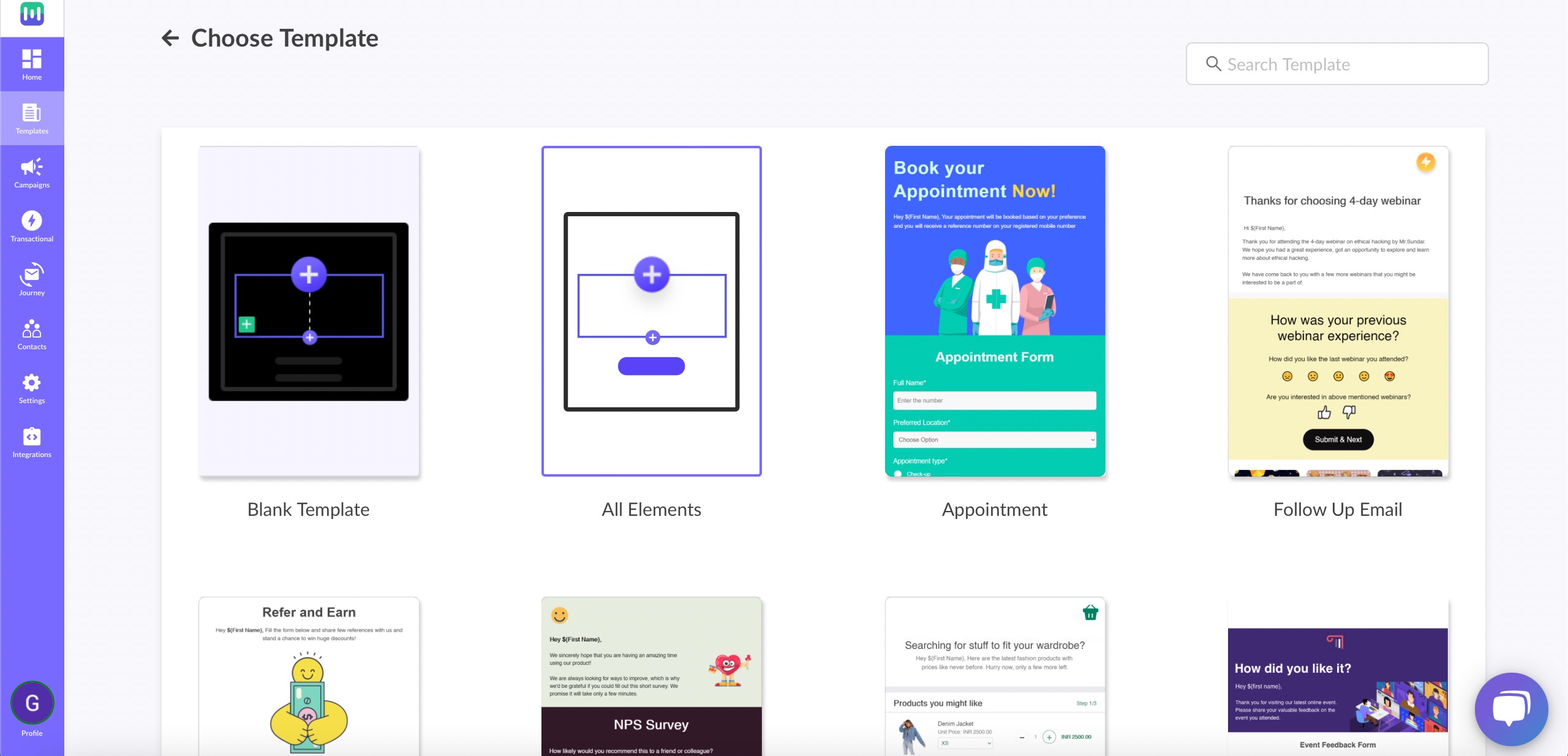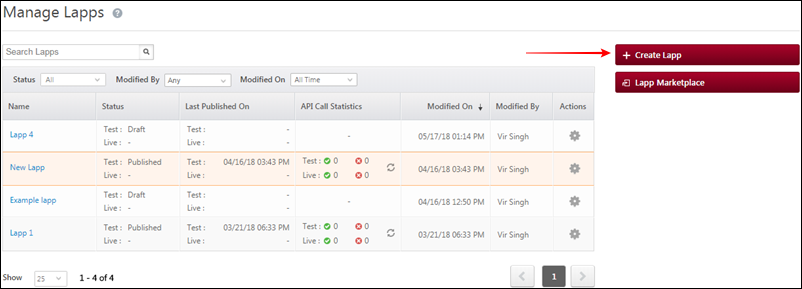Trigger Campaigns through Lead Squared on Mailmodo
Last updated May 5, 2025
In this article we will see how to configure a transactional campaign triggered by events recorded in LeadSquared.
This article will cover:
1. Setting up a transactional campaign in Mailmodo
2. Lead Squared setup
How to create a transactional campaign in Mailmodo?
Step 1: Go to templates from the vertical menu on the left side. Click on 'Create new template'.
Step 2: Either select a blank template or a pre made template
Step 3: Use the editor to edit the template. Save and rename the template upon completion. After saving, click on the back arrow.
You will be redirected to the template library. The saved template should be visible here.
Step 4: Go to Trigger under Campaigns from the vertical menu on the left. Click on New Transactional Campaign.
Step 5: Select the template you saved before. Click on Next.
Step 6: Add Subject line, Pre header Text, From Name and Reply to Email. Select sender email. Click on Next.
Step 7: You will be redirected to trigger on events. Select Webhook from list of platforms. Click on Next.
Step 8: Review and test your campaign. To test, click on send test campaign->enter email ID->send test email.
Once tested and reviewed, click on enable campaign.
Step 9: You would be able to see the Webhook URL. Click on Copy URL. We will use this Webhook URL in LeadSquared Lapp.
LeadSquared Setup
Step 1: Navigate to the Manage Lapps page in the Apps section of the main navigation panel.
Step 2: On the Manage Lapps page, click the Create Lapp button.
Step 3: Enter a name and description for the Lapp.
Step 4: Select the Coding Mode as Editor (write your code directly in the Lapps code editor).
function main(queryString, body, callback) {
ls.log.Info('Lapp called');
const data = body.Data;
const name = body.Current.FirstName;
const email = body.Current.EmailAddress;
const triggerEmail = {
url: `<campaign webhook url>`,
body: {
email,
data: {
name: name,
},
},
headers: {
'Content-Type': 'application/json',
},
json: true,
};
request.post(triggerEmail, function(error, response, body) {
ls.log.Info('Message sent via Mailmodo: ', response);
if (error) {
ls.log.Error('Mailmodo message trigger failed: ', error);
callback(error, null);
}
});
ls.log.Info('Done');
}Step 5: Publish the Lapp to configure it with the workflow.
Step 6: Navigate to Marketing>Automation and click Create Automation.
Step 7: After selecting an automation trigger, under the Custom Action, click Call Lapp.
Step 8: In the Call Lapp pop-up, search for your Lapp.
- Choose the Environment as live or test.
- Use the Query String field if you wish to pass additional data to the Lapp in the form of key-value pairs.
- Set the Save Response option to Yes if you want to save the Lapp response and use it to send emails with dynamic content.
Step 9: Click Save when you’re done.















